Exploring Colors on the Light Table
As the days grow shorter and the slanting rays of sun that create our rainbows are replaced by clouds, we shift our energy to other forms of investigative play with light and color.
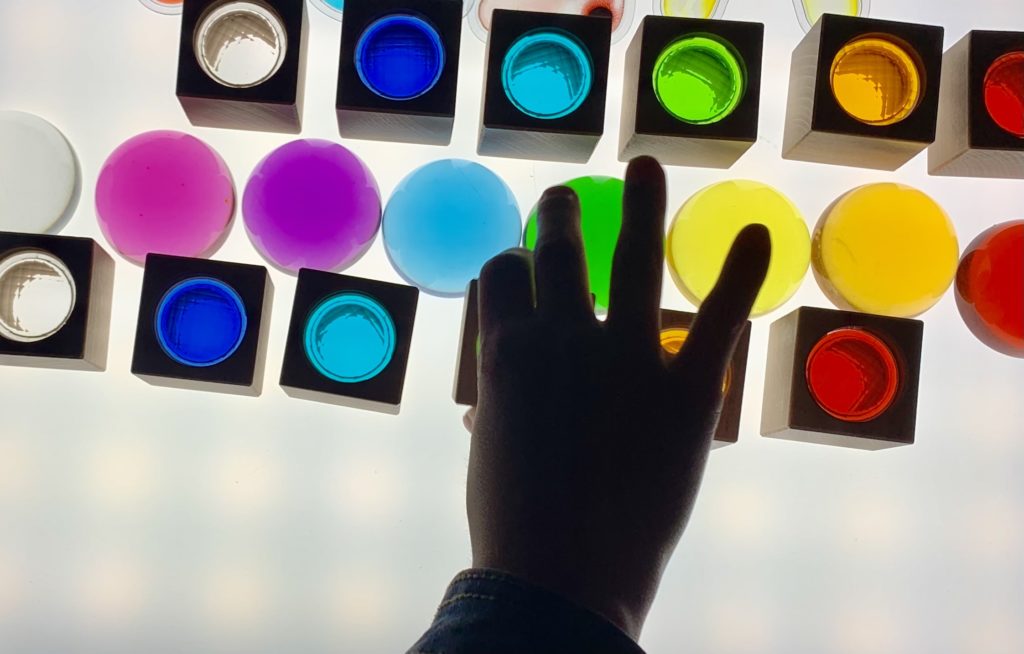
“Saaliha, come play with me at the light table!” Nora calls out.
Saaliha joins her friend and the STEM investigations into light, color and reflection continue.
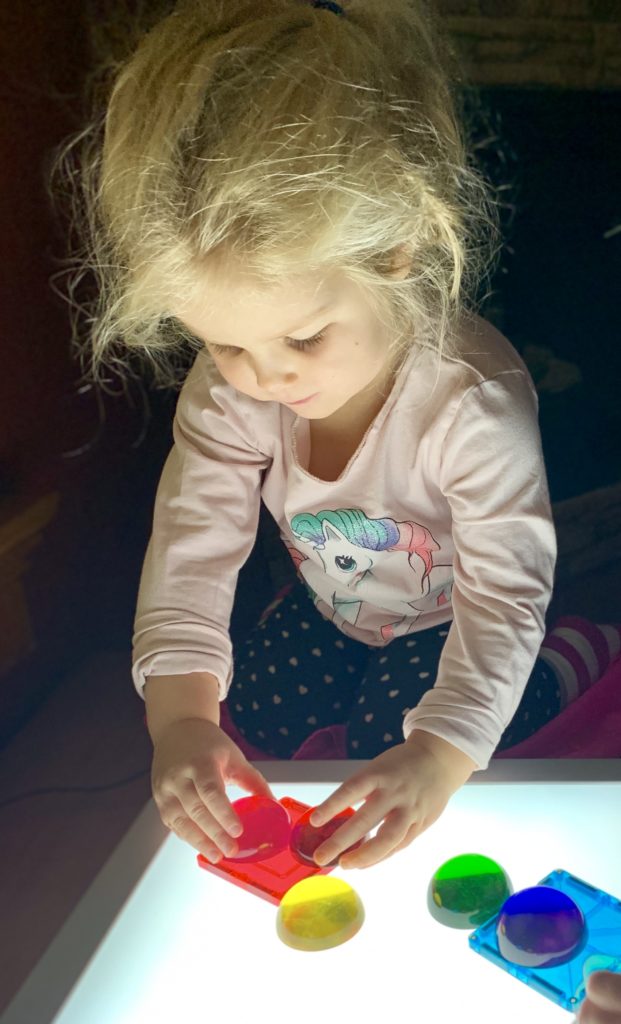
“Watch what happens when I put all of the reds together,” instructs Nora. “But look! It’s not really red. It’s pink! Ta-da!”
Saaliha is immediately drawn into this color exploration. I watch as Nora moves over to make room for Saaliha at the light table and the two friends immerse themselves in STEM collaboration, problem-solving and investigation.

“It is pink! Can I have the red one?” Saaliha asks. Nora passes a transparent half-sphere her way.
The girls experiment with different color combinations and share their theories and discoveries.
We love our light table because it never disappoints, stimulating long periods of intense play as the children lay translucent objects one over the other.
Light-table play can be a calming, absorbing experience for a child, and the learning is often enhanced by the presence of a friend and collaborator.
These explorations of color and light also offer opportunities to assess the children’s predictive abilities. As the children expand their knowledge base through trial and error, they collect “data” and add “probability” to their investigative skills.

Everything and anything translucent can be used in light and color play. We add a variety of colored translucent tiles to the light table, cut cellophane sheets into shapes to create mosaics and layer translucent paddles to create new and sometimes unexpected colors.
We add bingo chips and clear and colored gemstones to the mix to encourage counting and sorting by attributes.
Translucent blocks and Magnatiles inspire the children to create 3-D structures and see the interplay of light, color and reflection in three dimensions.
I keep baskets of loose parts near the light table so that the children can use them for unstructured, self-guided play.
I also stock up on non-traditional items such as cocktail stirrers, colorful shot glasses and reusable plastic ice cubes at the dollar store. While these objects may look more like happy-hour supplies than learning tools, they represent a treasure trove of loose parts to children. Sea glass is also a great idea. In short, if it’s translucent, add it to your light-table area!
I rarely tell children how or where to play with toys. Occasionally, children will bring wooden blocks or other non-transparent toys over to the light table area. Out of respect for their creative process, I’ll allow it—unless, of course, the objects are heavy enough to damage the light table. These non-translucent objects are an important part of the children’s investigations. All objects look different when lit from above and below, and when viewed from different angles. This open-ended approach to play gives the children more latitude to create and investigate with color and light.
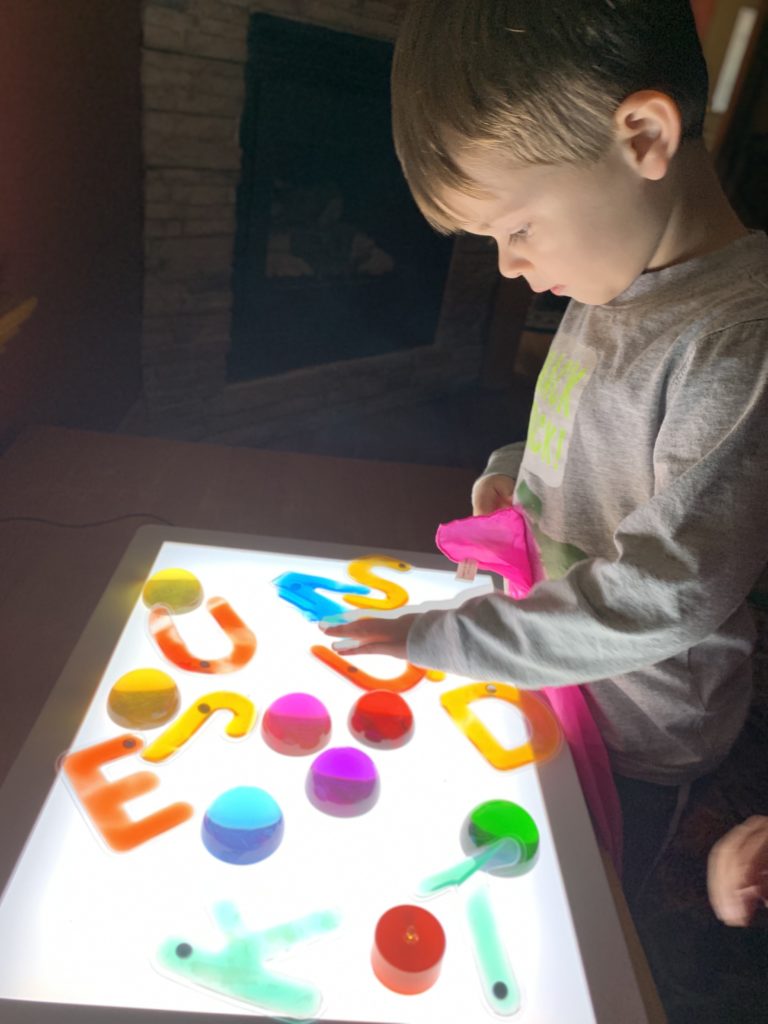
A few of my students are developmentally ready to start learning the alphabet. Some recognize letters, while others just perceive the letters as shapes. I make sure that the letters are accessible to my early learners at all stages of brain development and leave it to the children to make up their own rules for letter play.

Sometimes we add a play silk to the light table, which changes the children’s perspective and introduces new ways to play with light, color and reflection.
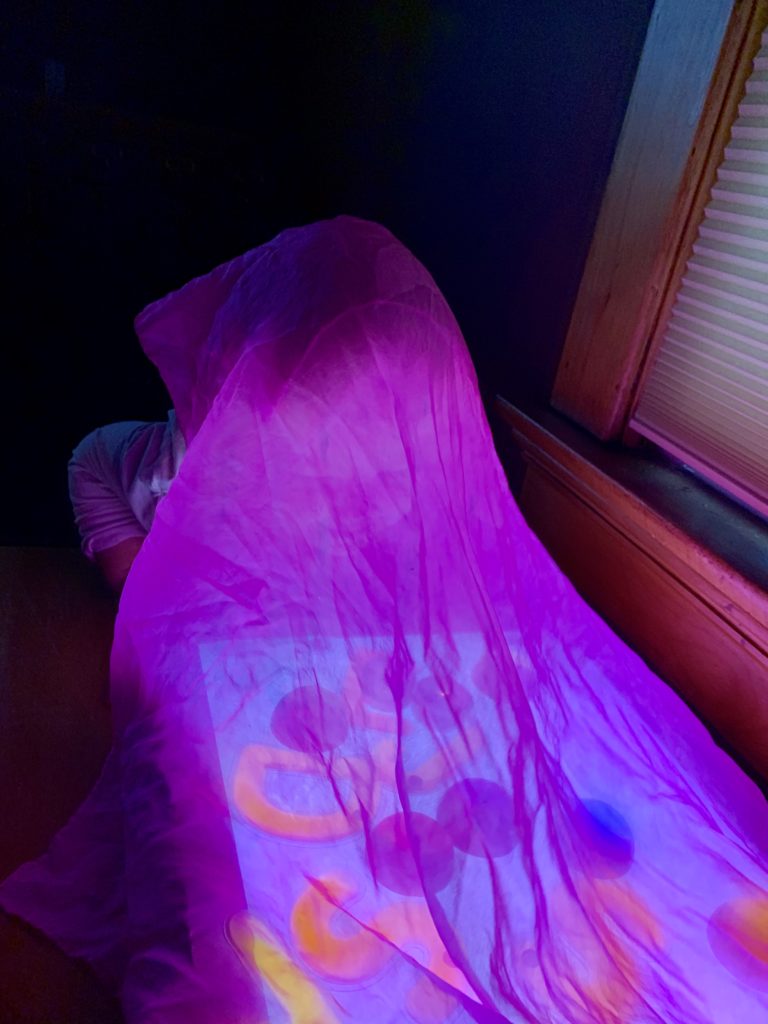
The light table supports our students as they make observations, think scientifically and collaborate with their friends while investigating new ideas and theories.
I love this learning tool because it’s always developmentally appropriate. The children build on their own knowledge and share their observations with others.
When children make their own observations and discoveries, they are forming and testing hypotheses. These moments of learning empower them to continue their exploration and investigation outside of the classroom.
This self-guided exploration paves the way for inquiry-based learning. So turn on that light table, trigger some curiosity and watch the magic of play and discovery brighten up your day!
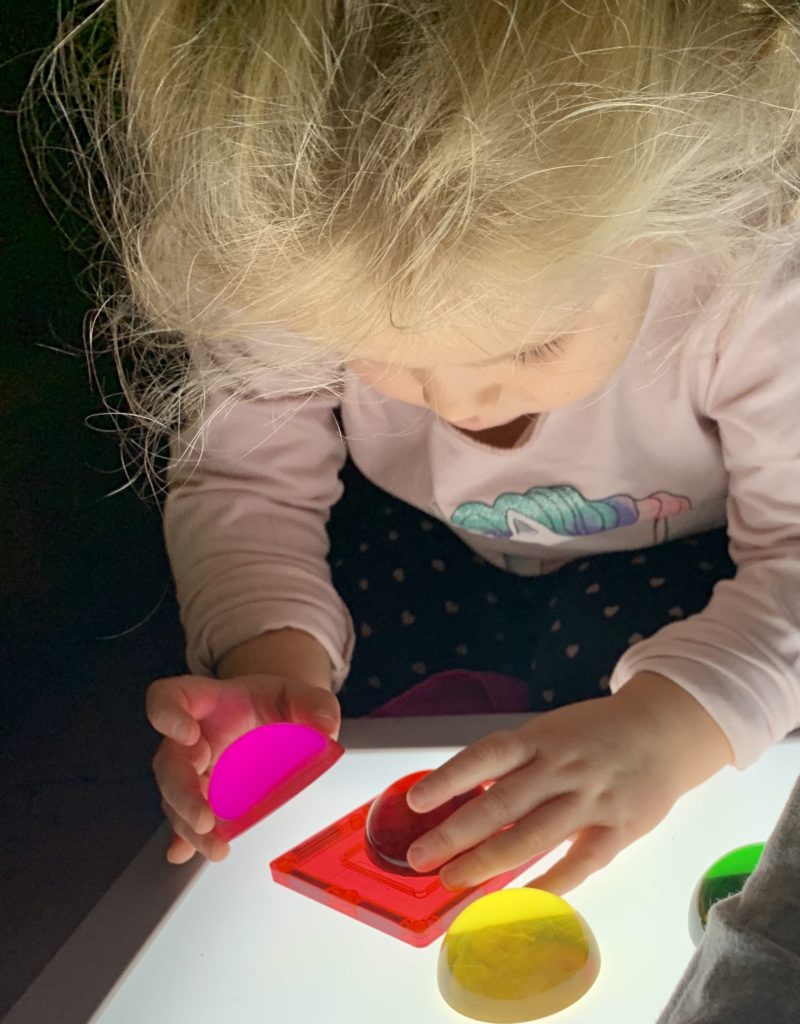
The light-up table would be a great addition to the classroom to discover when colors are put together that they create a new color.
very informative
We have a few of these in our center, i think we will purchase more of these colored magnets, and for our one lil guy he likes flashing light and make stuff on the table would be a good activity for him.
I love these tables but see new ideas we can do with our friends
I love this light up table idea. It can be used in many different ways and to different age groups.
We have one at our center. The kids love it! So many things they can do to get different colors and ideas.